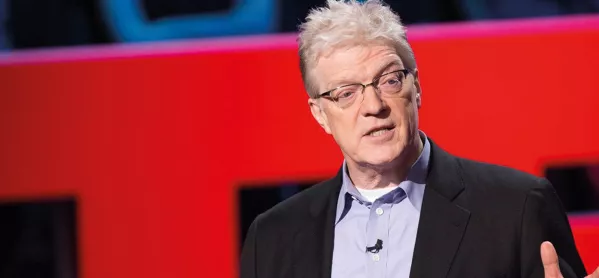- Home
- Book review: You, Your Child and School by Ken Robinson and Lou Aronica
Book review: You, Your Child and School by Ken Robinson and Lou Aronica

You, Your Child and School
By Ken Robinson and Lou Aronica
Allen Lane
304pp, £19, hardback
ISBN 9780241352908
Anyone who has delivered a talk to more than 50 million viewers deserves a hearing. Sir Ken Robinson has won worldwide fame for producing the most watched TED Talk ever. In a little over 19 minutes, he made a powerful case that schools “kill creativity”. Tony Blair’s former creativity tsar clearly struck a chord.
Robinson’s core argument is that schools squander children’s creative talents because they are preoccupied with narrow assessment of academic ability. He believes creative subjects - drama, dance, art - should command equal status to the core disciplines of literacy, maths and science. Robinson calls for a revolution in education to replace the “industrial, manufacturing model of batching people” with an organic “agricultural model” in which all talents can flourish.
A succession of books has followed the 2006 talk, expounding and expanding on these ideas. This latest offering, written with novelist and non-fiction writer Lou Aronica, is a call to arms for parents to challenge the status quo in schools and help find their children’s creative calling.
Robinson has a point. As a parent and school governor, I’ve had first-hand experience of the obsessive drive in schools to get children to perform in academic tests. Efforts to drive up standards have created an unbalanced system that holds schools to account on crude and narrow measures of learning - often at the expense of the arts, music, sport, humanities and vocational skills.
The losers of this educational arms race are children from the most disadvantaged backgrounds, who are devoid of the resources, tactical advice and private tutors to succeed in the testing game. Far from being the great social leveller, the education system has turned into a vehicle perpetuating our social elites from one generation to the next.
But all good education gurus have their critics. And Robinson is no different. Some accuse him of cherry-picking evidence and relying on seductive anecdotes to support his powerfully simple arguments; others complain that he offers little in the way of practical next steps for teachers to change their daily classroom practice.
His arguments often fly perilously close to the evidence-free worlds that have for so long darkened education’s universe. There is little to back up his contention that teachers should adapt their practice to suit every pupil’s personal “learning style”. Academic Daniel Willingham is sceptical about the bold claims made about the existence of multiple separate intelligences.
Practical tips for parents
Meanwhile, teachers have been left frustrated by the lack of gritty reality once the entrancing rhetoric has been peeled away. As teacher Alex Quigley memorably put it: “Beyond the frilly knickers of the performance, we are left searching for the less aesthetically pleasing undergarments that are the practical answers for change.”
But, to be fair, You, Your Child and School offers plenty of practical tips for parents. Robinson and Aronica cover extensive ground - from child development, educational policy reform and classroom practice to post-school career options. But the creativity crusade is never far away. One section argues that dance is as important as maths in school. Another claims testing has “become a dreary culture that’s demoralising students and teachers alike”.
Their dual authorship is a tension throughout the book. Some passages are written in a joint “we” voice, others in a singular “I”. But the most nagging issue is, who are the most likely readers of this book? I could only imagine anxious middle-class parents with the time to devour its pages, many of whom are the tigerish types already obsessed with their children’s futures.
Robinson at least practises what he preaches. His daughter left a high-achieving school at age 16. She went on to take courses in jewellery design and sewing, attend a community college and work in the music industry.
But this personal story only highlights the freedoms a middle-class upbringing allows: it may be OK for the daughter of a famous education professor, but would be incredibly risky for a student without the security of a privileged background.
Studies have demonstrated a yawning cultural-enrichment gap between privileged children and the rest. The creativity Robinson speaks of is a luxury enjoyed mostly by social elites. “Too often, we neglect this power of the arts to actually transform lives, particularly in the poorest communities,” said Andria Zafirakou, the art and textiles teacher from Brent, as she received this year’s Varkey Foundation’s $1 million global teacher prize. It is inspirational teachers doing the gritty work in the classroom who are most likely to bridge the creativity divide.
Lee Elliot Major is chief executive of the Sutton Trust. His book, Social Mobility and its Enemies, written with Stephen Machin, will be published by Penguin later this year
Keep reading for just £1 per month
You've reached your limit of free articles this month. Subscribe for £1 per month for three months and get:
- Unlimited access to all Tes magazine content
- Exclusive subscriber-only stories
- Award-winning email newsletters



